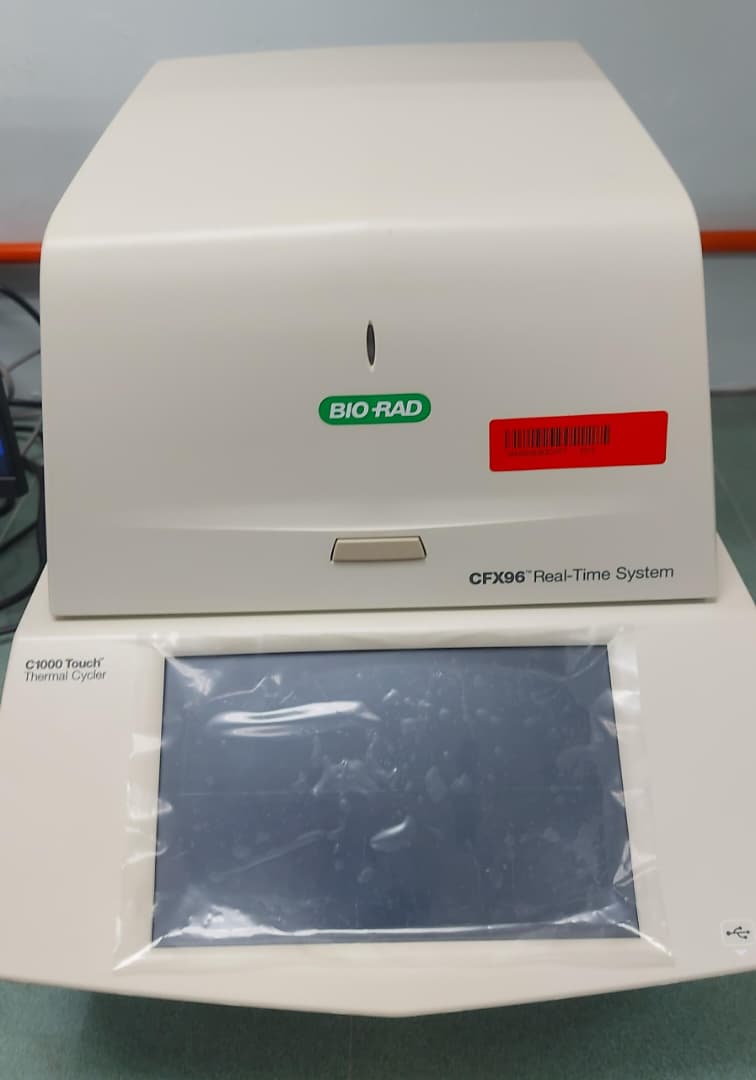


Laboratory Equipment & Services Information System
by Centralized Laboratory Management Office (CeLMO)
A real-time thermocycler, or QPCR REAL TIME, is a specialized instrument that performs DNA amplification through cycles of precise heating and cooling, like a standard thermocycler, but also monitors the process in real-time by detecting the fluorescence produced by DNA-binding dyes or fluorescent probes.
- Project Code: SRO917Q1027
- Account No.: 305/19/KI/35CIPPT/614101/1
- Asset No.: AK00055262
1. DNA Amplification: Like a standard thermocycler, the instrument undergoes cycles of heating and cooling to amplify the target DNA or RNA sequence.
2. Fluorescence Detection: During each cycle, the instrument monitors the fluorescence signal generated by the amplification process.
3. Quantification: The intensity of the fluorescence signal is directly proportional to the amount of amplified DNA. By tracking the fluorescence over time, the system can determine the point at which the amplification begins to increase exponentially.
4. Threshold Cycle (CT): This is the cycle number at which the fluorescence crosses a set threshold. The Ct value is inversely proportional to the initial concentration of the target DNA, meaning a lower Ct value indicates a higher starting amount of DNA.
- Manufacturer
- SINGAPURA
- Brand
- BIO-RAD
- Model
- CFX96
- Year Manufactured
- 2019
- Year Procured
- 2019
- Department
- PUSAT PENGAJIAN SAINS FARMASI
- Location
- Pusat Pengajian Sains Farmasi,makmal Gcp J05/104
- Date Registered LESIS
- 03/09/2025
- Category
- Function
- Booking,
- Category
- Staff operated
- Equipment Status
- Good
Person In-Charge


